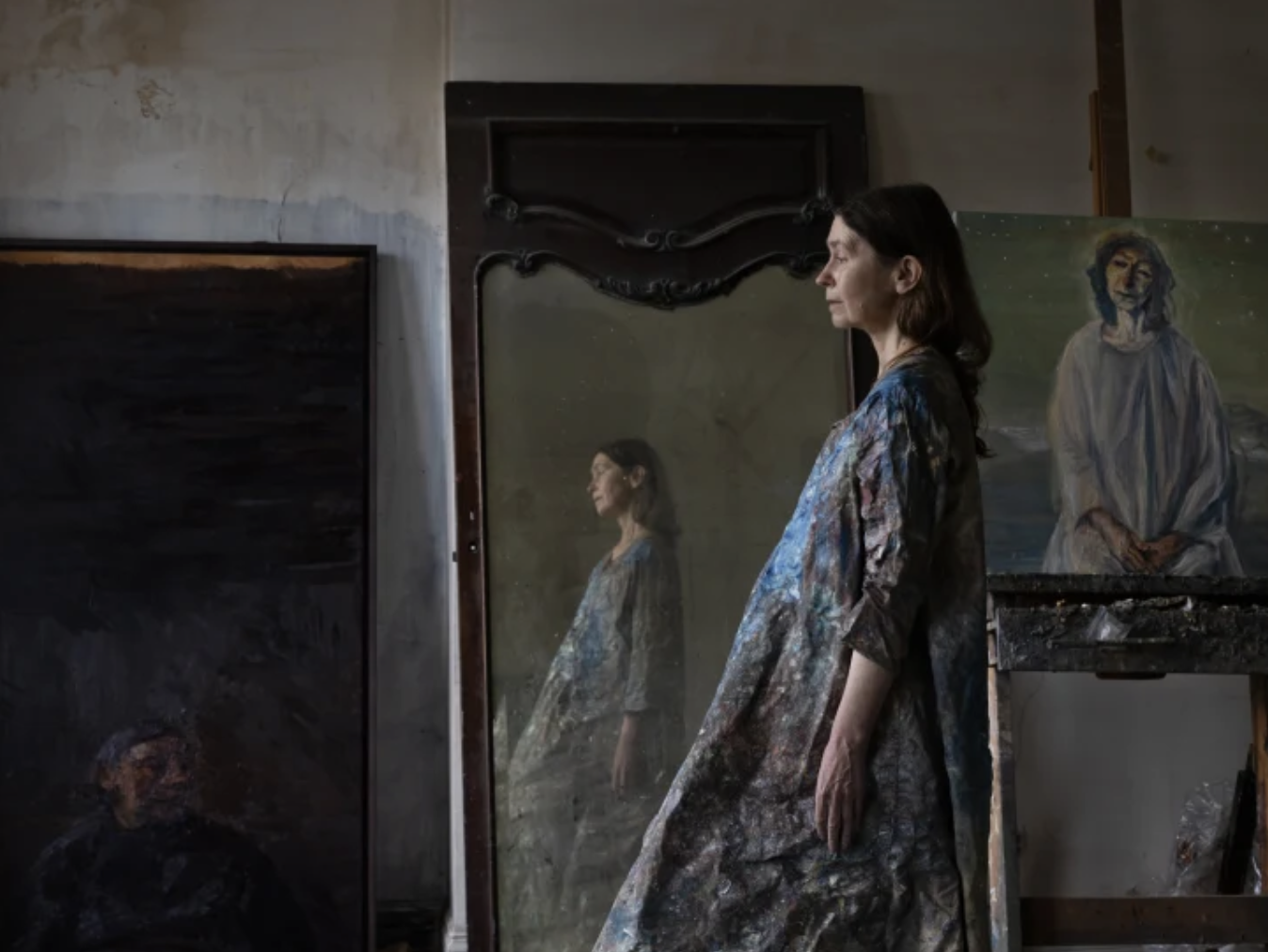GAUTIER DEBLONDE
Gautier Deblonde, Annette Messager, Paris, 2009
Gautier Deblonde’s projects are ones of patience and discipline, working on collections for almost decades allowing them to mature before publishing. This development provides his work with a real sense of grace and control. His works capture portraits with an absence of people. He captures fragments of subject matter, light marks and places, “fascinated by the traces left by any human activity” (Valains 2025) and it is through this approach he captures artists in a truly authentic way.
In an 1999 The Times artist’s report, writer Richard Cork describes him as someone who “knows how intensely artists project themselves into their work as it develops” and Deblonde’s ability to see this as well as artist’s ability to become completely emersed in their work is clear throughout his photographs both of artist and studio.
I am inspired by his approach to capturing the images that truly encapsulate what it is to be a creative. The paint on the doorway, the sketches and drafts. All of which demonstrate a real flow of creativity. This is particularly evident in his series focussing on portrait artist, Celia Paul.
Gautier Deblonde, Giuseppe Penone, 2013
Gautier Deblonde, Cai Guo-Qiang - New York City, 2016
Gautier Deblonde, Zhang Huan, Shanghai, 2009
Gautier Deblonde, Portrait of Celia Paul, 2025
Gautier Deblonde, Celia Paul, 2025
Gautier Deblonde, Celia Paul, 2025
Gautier Deblonde, Celia Paul, 2025
His approach to shooting a studio is very all encapsulating. He commonly employs the use of a wide-angle lens to capture as much of the space as possible – highlighting the value he places upon studios. This is really evident in his Atelier series which features studios from over 130 artists 69 of which were published in the collection.
With my own landscapes, I will experiment with this sort of almost Wes Anderson style composition, with the strong flat-on shooting style. This method gives the spaces a sense of quiet and pause, which allows viewers to really take in each detail.
His photographs of artist’s studios are often in the artist’s absence, instead using their works in progress and space in general to provide a portrait of who they are and what they do. Some describe them as “unmanned but in motion” (Compton 2014) in response to this approach which I find really poetic.
To capture this almost paused feeling, Deblonde shot his photographs at lunchtime, where works lay stagnant between two working sessions, spaces left as is, in a working state not cleaned or polished. (Deblonde 2014). There comes a sense of anticipation for the finished products from this.
He captures a portrait of his artists through their space, “The studio is the space of one artist and one only. Some artists can have many assistants or technicians, but the identity of the studio is the identity of the artist, always.” (Deblonde 2014)







